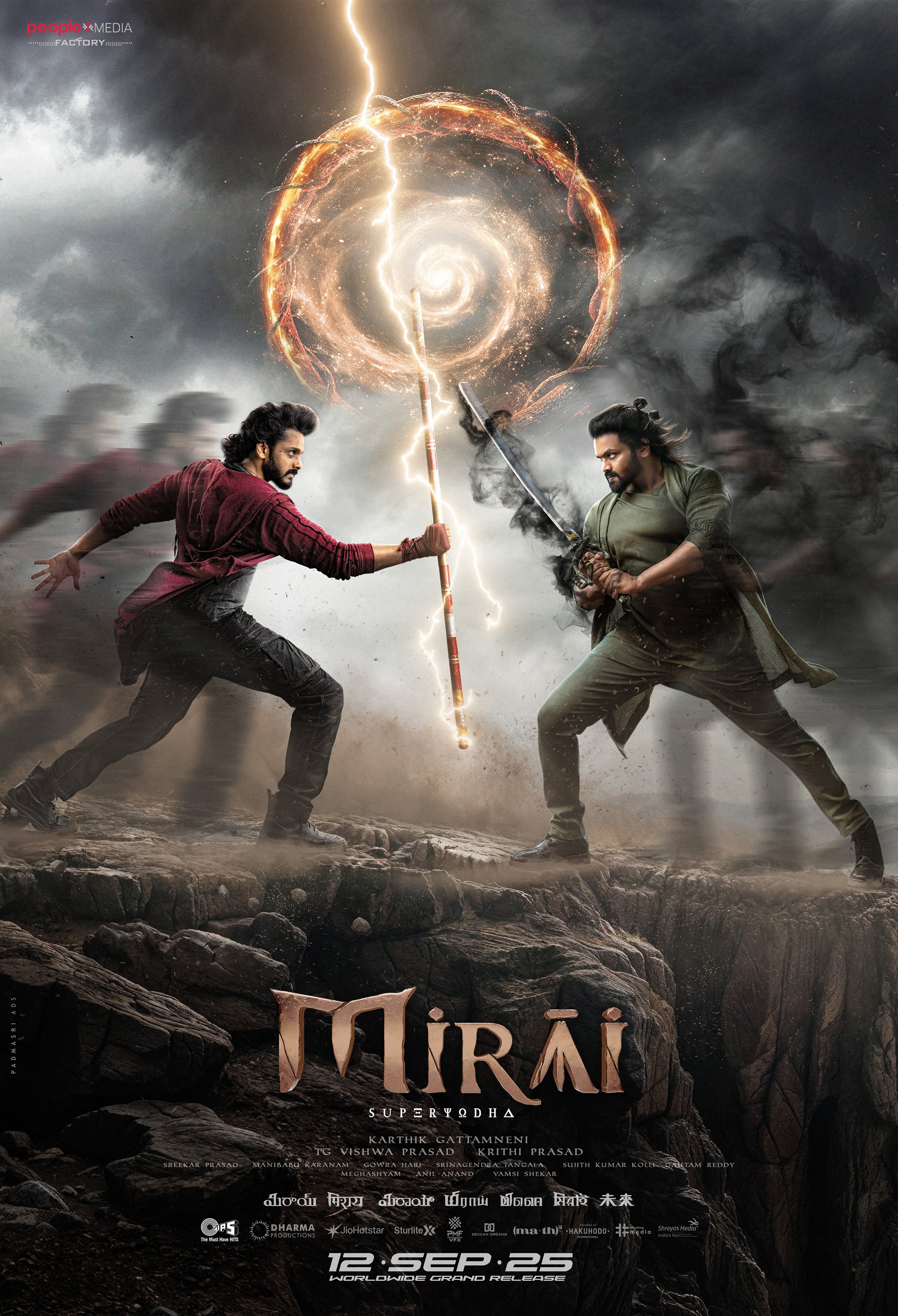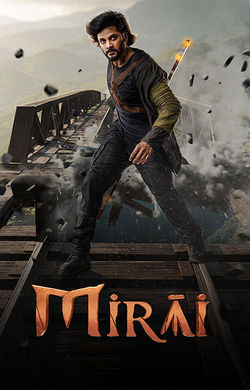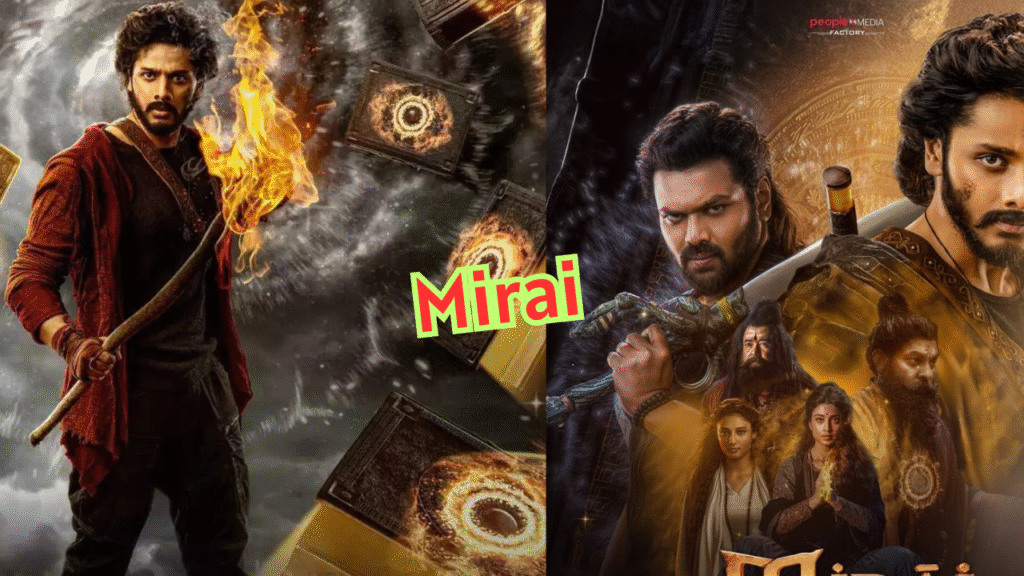In Japanese, the word mirai (未来) simply means “future.” Yet in the realm of cinema, when that word becomes a title or theme, it invites us to ask: What kind of future are we imagining? Who will inhabit that future? And how are we preparing for it in the here and now? This article explores the idea of “Mirai movies” through two very different films—one Japanese, one Telugu-Indian—and examines how each uses the notion of future (“mirai”) as a narrative and thematic anchor. Through these case studies, we’ll reflect on why films bearing the name Mirai are telling us something significant not just about storytelling, but about cinema itself and where it might be headed.
Introduction What Mirai Means in Movie Culture
/odishatv/media/media_files/2025/10/07/mirai-poster-2025-10-07-21-12-59.jpg)
Titles matter in cinema. A title like Mirai is evocative: it points to what is to come, to possibilities, and to transformation. For filmmakers, choosing Mirai signals ambition, a reach beyond the present moment. It situates a story within the axis of time—from present to future. In culture, “the future” can be hopeful (what we aspire to), fearful (what we dread), or both. For cinema, which thrives on change and evolution, Mirai can mean the new story, the new hero, the new audience.
When we say “Mirai movies,” we might simply mean films that carry the word “Mirai” in their title. But more deeply, we might mean movies that already reach forward: into new themes, new styles, new emotions. In this article we will engage two films titled Mirai (one from 2018 Japan, the other 2025 India) as lenses for both what “future” means and what the future of cinema might become.
Case Study I Mirai 2018 fily Japan A Child’s Journey Through Time and Family
Directed by Mamoru Hosoda and produced by Studio Chizu, the 2018 Japanese animated film Mirai (original title Mirai no Mirai, literally “Mirai of the future”) follows the story of four-year-old Kun, whose world is upended when his baby sister Mirai arrives and becomes the centre of his parents’ attention.
Kun’s jealousy turns to confusion. He retreats to the garden, and there his imagination carries him through time and space: he meets a humanified version of his family dog, his sister as a teenager, and ancestors from different eras. The film uses magical realism to externalise Kun’s inner turmoil—his fear of being surpassed, his longing for attention, and his growing understanding of what being an older brother truly means.
Why does this film matter? For one, it captures childhood not as simplified innocence but as real, messy emotion. Standard family animation might gloss over tantrums, jealousy or sibling rivalry. Hosoda instead centres these difficult feelings and transforms them into adventure. As one reviewer put it: “Mirai is a true celebration of childhood imagination … the director manages to capture on screen the magic of how a child perceives the world.”
Critically, the film was well-received. On Rotten Tomatoes, for example, it was described as charming and emotionally resonant—though some critics found the time-travel fantasy uneven. The emotional heart, however, is undeniable.
In terms of “future,” this film uses Mirai as the baby sister’s name and as symbol—Mirai (future) is a promise of continuity, growth and connection across generations. Family, ancestry, the passing of love and legacy: these are the future. For Kun, the journey is less about escaping now and more about accepting change and welcoming what comes. For cinema, this film exemplifies how animation can be deeply introspective while still imaginative.
Case Study II: Mirai (2025 film) (India / Telugu) – Mythology, Fantasy & The Future of Heroism

Now shift continents. The Telugu-language film Mirai (2025) directed by Karthik Gattamneni is a bold fantasy action-adventure that draws from Indian mythological elements and contemporary cinematic spectacle.
Its story: Vedha, a young orphan and pickpocket, is revealed to be the destined protector of nine sacred scriptures (grandhas) created by Emperor Ashoka after the Kalinga war. These scriptures can turn mortals into deities. The evil force “Black Sword” wants them to plunge the world into darkness. Vedha’s journey becomes one of discovering his identity, his mother’s sacrifice, and his role in shaping the future.
The title Mirai here serves multiple layers. As actor Teja Sajja explained:
“‘Mirai’ means … a hope for the future, but the word carries several other meanings in the movie.”
Thus, “Mirai” becomes the object to be reached, the value to be protected, the vision for a world beyond what is present. In this film, unlike the quiet introspection of the Japanese one, the future is epic: cosmic stakes, mythic lineage, and a hero’s journey. The film blends high-concept fantasy with emotional undercurrents of duty, sacrifice and redemption (especially the mother-son dynamic).
From the perspective of cinema, this “Mirai” illustrates how the concept of future is globalised: Indian cinema is willing to aim for visual scale, genre expansion, myth as metaphor, merging tradition and modernity. It demonstrates how the future of entertainment may involve hybrid forms—myth + fantasy + spectacle.
Common Themes & Thematic Bridge: “Future” as Narrative Device

What emerges when you put these films side by side? They are very different in style and cultural context, yet both are firmly anchored in the idea of future. Here are some shared thematic strands:
- Growth & Transformation: In the Japanese film, Kun transforms from jealous child to caring brother. In the Indian film, Vedha transforms from orphan to protector. The future here is less about technology and more about personal evolution.
- Legacy & Family: The Japanese film explores family across time, including ancestors and new generations. The Indian film draws from mythological lineage and cosmic legacy. Both suggest that the future is rooted in the past and present; time isn’t linear but layered.
- Imagination & Myth: Both films transcend everyday realism. Kun’s time-travels, the Indian hero’s mythic journey—they remind us that cinema’s future isn’t just in realistic portrayal but in broad imaginative leaps.
- Hope & Responsibility: The word “mirai” implies hope for what comes next. In both narratives, the characters are tasked with responsibility—older brother, protector of sacred texts. The future is something to be shaped, not simply awaited.
- Cultural & Global Reach: While one film is Japanese animation and the other Indian fantasy, both are engaging with global themes: family, heroism, time. This points to the “future cinema” being transcultural.
Thus, “Mirai movies” can be conceptually those that look ahead—into new formats, hybrid genres, cross-cultural storytelling, and thematic ambition.
Why “Mirai Movies” Matter for Cinema’s Future
Why should we care about these films, and the idea of “Mirai movies”? Here are several reasons:
- Broadening Audience Expectations
Audiences today expect more than just formulaic story; they expect emotional depth, visual innovation, and cultural authenticity. “Mirai” films respond to that by combining introspection (Japanese film) and spectacle (Indian film) under the shared banner of future-oriented storytelling. - Technological and Visual Ambition
Both films utilise sophisticated animation or VFX. The Japanese film uses imaginative visuals to make everyday settings magical. The Indian film uses mythic VFX to match its grand stakes. This shows how the future of cinema depends on technical ambition married to narrative sincerity. - Cross-cultural Inspirations
That a Japanese word is used by an Indian film and resonates globally shows how cinema’s future is increasingly interconnected. Filmmakers will borrow, adapt, transform concepts across borders. A “Mirai movie” may not be confined to one culture. - New Storytelling Models – Time, Legacy, Transformation
The “future” is less about gadgets and more about change. These films focus on personal and familial shifts—brotherhood, warrior-duty, identity. That indicates cinema’s future may be less about external spectacle and more about internal evolution. - A Reminder of Cinema’s Role
Cinema can help us imagine a better future, confront our fears about it, and shape our understanding of who we are. “Mirai movies,” by being explicitly about what’s next, push filmmakers and audiences alike to reflect on today in light of tomorrow.
Conclusion: Looking Ahead – What the Next “Mirai” Might Be
As we close this exploration, we return to the core question: What does Mirai mean for you as a viewer? Are you simply entertained? Or are you challenged to think about what comes next—your relationships, your role, your world?
The two films we examined show very different paths, yet they converge on the idea that the future is not a time zone, but a responsibility. For the older brother, it means caring. For the warrior-protector, it means defending. For all of us, it may mean preparing for what comes next—not just passively, but consciously.
What might the next “Mirai-style” film look like? Perhaps it will explore AI, climate, global family, virtual reality, or societies yet to be built. Perhaps it will merge genres even further: animation with live-action, myth with modern setting, local culture with global scale.
Finally: film-makers and audiences alike should remember that when a film calls itself Mirai, it’s making a promise. It promises to reach outward, to envision new worlds, to articulate new relationships. And in doing so, it reminds us that the future of cinema depends on imagination.
In a world racing forward at unprecedented pace, we need stories that help us anchor our hopes, fears, and dreams. “Mirai movies” may just be the kind of stories we need—not because they are always perfect, but because they ask the right question: What comes next?


